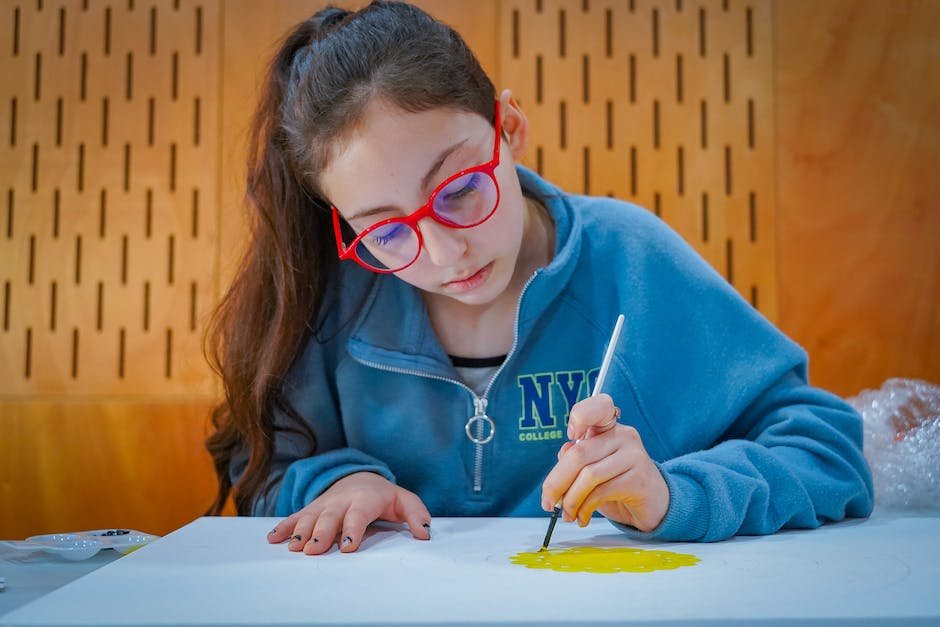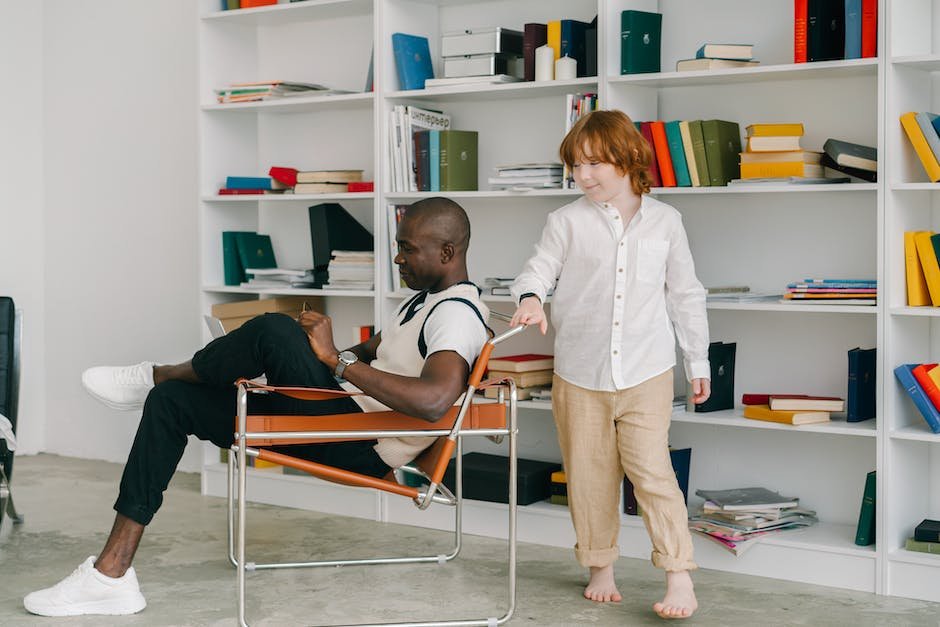
Autism Spectrum Disorder (ASD) holds a range of unique intricacies, particularly related to communication. Individuals with autism often interpret, express and interact with the world in ways that can significantly vary from neurotypical patterns. For these individuals, especially children, the process of communication can pose a challenging endeavor, sprinkled with obstacles as well as opportunities. The onus, therefore, falls upon parents, caregivers, educators, and society as a whole, to understand, acknowledge, and support the diverse communication styles. Our examination covers five crucial aspects of communication strategies surrounding ASD – from understanding autism and communication, recognizing distinct communication styles, to creating opportunities for interaction, using technological and visual aids and teaching social skills, culminating with a focus on the delicate balance between patience and persistence.
Understanding Autism and Communication
Communicating Through Autism: Challenges and Uniqueness of Autism Spectrum Disorder
There’s an undeniable uniqueness in every child, a spark of intrigue that sets them apart from others. This exclusivity becomes even more profound when considering children on the Autism Spectrum Disorder (ASD). One of the most distinct aspects of ASD is the diverse set of communication challenges that these children might face. This article aims to delve into those facets, offering insights on how they shape the lives and experiences of those on the spectrum.
Autism Spectrum Disorder, as the name implies, isn’t a one-size-fits-all diagnosis. It’s a wide spectrum of symptoms, skills, and challenges that impact each individual differently. Communication challenges are among the most commonly encountered aspects. However, framing them as ‘challenges’ doesn’t entirely represent the comprehensive nature of ASD. A better understanding of these ‘differences’ rather than ‘difficulties’ opens doors towards fostering healthier bonds and rapport.
Perhaps the most noticeable challenge is verbal communication. Many individuals with ASD might struggle with speaking, often delayed in their language development. They might use unique phrases, repeat words or phrases (a phenomenon known as echolalia), or communicate in a relatively flat, monotone voice. It’s also not uncommon for them to have difficulty understanding idioms, humor, or sarcasm – subtleties of language that we often take for granted.
Nonverbal cues present another complex hurdle. Many individuals with ASD find it challenging to interpret body language, facial expressions, or other non-verbal signals, making social interactions more complicated. Similarly, their own use of body language might be somewhat limited or different, which could lead to misunderstandings.
However, communication challenges in Autism Spectrum Disorder do not only involve language and social interactions. Children with ASD often struggle to understand expectations in different settings or vary their behavior based on context – what researchers call “pragmatic” language skills. This could mean having trouble transitioning between activities, waiting their turn during games or conversations, or understanding how to engage in age-appropriate play or conversation.
Yet, despite these hurdles, children on the Autism spectrum possess their unique communication strengths. Some exhibit impressive vocabularies for their age groups, while others may share fascinating, in-depth knowledge about specific topics of interest. Understanding and embracing these unique communication styles can lead to deeper connections, more meaningful interactions, and ultimately, a fuller appreciation of the beautiful diversity within ASD.
Navigating through these challenges and appreciating the distinctiveness often requires patience, understanding, and a treasure trove of resources. It’s crucial to remember that every individual on the autism spectrum is unique in their abilities, difficulties, and preferences. While these communication challenges are a distinctive part of Autism Spectrum Disorder, they’re also the unique threads that weave the tapestry of the individual’s life.
Speaking ‘autism’ might seem like learning a new language at first—but as anyone who has loved a child on the spectrum can tell you, it’s a journey worth every step. The glimmers of understanding, the breakthroughs in communication, and the growing bond makes these challenges nothing short of a poignant and enriching journey towards understanding, acceptance, and love. After all, isn’t that what family is about—loving each other in our own special language?

Recognizing Communication Styles in Children with Autism
Unlocking the Unique Expressions of Children With Autism
Navigating the world of Autism Spectrum Disorder (ASD) can often feel like trying to decipher a complex and intricate secret language. Each child is unique in their communication methods, and it’s our job as parents, caregivers, and community members to tune into these distinctive forms of expression.
Beyond what we’ve explored – the verbal and non-verbal communication challenges and the impressive vocabularies of our children – lie more ways in which they express themselves. Children with autism are like colorful gardens, where each bloom opens in its own time and reveals its own kind of beauty.
One key area that often gets overlooked is their deep-rooted authenticity. Children with autism wear their hearts on their sleeves, revealing an honesty that is both refreshing and moving. They rarely disguise their feelings or pretend to be what they are not. This authenticity makes their emotional expressions unique, honest, and incredibly poignant.
Artistic endeavors are another transformative form of expression for many children with autism. For these children, art, music, or dance can become their voice, allowing them to articulate their thoughts and feelings in profound, unexpected ways. They might craft intricate drawings that teem with details or immerse themselves in the rhythm and cadence of a musical piece.
The world of sensory experiences is also exceptionally meaningful for children with ASD. Their heightened perception to certain sights, sounds, tastes, textures, and smells often guide their actions and interactions. Their diverse sensory responses are a form of self-expression, a way to communicate their comfort zones, and preferences.
There’s also an amazing subworld of ‘stimming’ – short for self-stimulatory behaviors. These repetitive movements or sounds – like flapping hands, rocking or repeating words – can communicate a gamut of emotions and reactions. For children with ASD, stimming can be a comfort mechanism, a joyful expression, or a sign of being overwhelmed.
Embracing the multi-faceted ways children with autism express themselves truly opens your eyes to their unique world. As parents and caregivers, it’s important to respect these different manners of expression, interpreting and understanding them as best we can. By fostering an environment where they can safely express themselves, we empower our children to embrace their unique voices.
Without a doubt, the journey with children with autism can be akin to treading an unfamiliar path, but the joy of discovering their individuality outweighs any challenges. As we connect with their unique expressions, we build a relationship rooted in understanding, acceptance, and absolute admiration for their unmatched spirit.
The language of ASD might be different from what we are accustomed to, but it certainly is not lesser. It’s an authentic, multifaceted, and profound language, and learning it is an extraordinary adventure. The beauty of their expressions challenges us to listen more closely, understand more deeply, and love unconditionally – enriching our lives in more ways than we could have ever imagined.
So, let’s continue to cheer on our remarkable children as they find new and different ways to express themselves. Because, in their diversity, we find an enriching, beautiful slice of life. Their unique communication styles are not something to be corrected but to be celebrated.

Creating Communication Opportunities
Now that we’ve delved into the communication traits of children with autism, let’s dive into the strategies we can use to foster more opportunities for these kids to express themselves.
A hidden gem in our parenting journey comes in the shape of authenticity. Kiddos on the autistic spectrum are truth-tellers, their honesty, a refreshing and enriching gift. Encouraging this authenticity can dramatically enhance their overall communication abilities. Remember to acknowledge their thoughts, feelings, and opinions; they’re bound to communicate more when they feel heard and appreciated.
Harnessing creativity through artistic endeavors can sometimes hold the answer to enhanced communication. Children on the spectrum might find solace and expression in drawing, painting, or sculpture. Don’t fret about the type of art your child leans towards; instead, support them in exploring and immersing themselves in colors, shapes, and textures. Their creations may astound you with a unique, unspoken narrative.
Who would have guessed how critical sensory experiences could be to children with autism? Brimming with info, the sensory world plays an integral role in shaping the communication abilities of children with ASD. Engaging them in sensory play – be it through water, sand, play-doh, fabrics, lights, or sounds – can foster their interest in communicating their unique perceptions.
Stimming, or self-stimulatory behavior, isn’t merely a comfort mechanism; it’s a form of communication for many kids on the spectrum. Observing and understanding their stimming patterns can grant you access to their feelings and needs, bringing you a step closer to their subjective experiences.
Trying to get on the same page with a child with autism can feel like trying to decode an alien language sometimes. But believe me when I say – once you start understanding, it becomes the most beautiful language you’d ever know. It requires you to transform not just as a parent, but as a being.
Creating an environment of safe expression – where they’re free to be themselves, make mistakes, experience emotions, all without judgment or penalty – encourages children with Autism Spectrum Disorder to share more about what’s going on in their brilliant minds.
Embrace the diverse communication styles your kiddo shows off. Celebrate them, highlight them as strengths. A thumbs-up from someone they trust does wonders to their confidence and boosts their willingness to express themselves more.
And finally, the cornucopia of emotions, challenges, mistakes, wins, tears, and laughter makes the journey of connecting with a child with autism an incredible adventure. As we learn, grow, stumble, clean up, and march forward, we realize that this could very well be the most fulfilling, enlightening journey we’ve embarked upon. And no doubt, along the journey unfolds an amazing child, waiting for the world to understand their unique language. Now all we need do is pause, listen, and appreciate the beauty in their silence, their words, and everything in between.

Using Visual and Technological Aids for Communication
As parents, there’s nothing quite like that moment when we first lock eyes with our children and feel that indescribable connection. While it’s a universal experience common to parents across the globe, each parenting journey is different, unique, and special in its own way. This could not be more true for parents with autistic children. The bridge built by language and understanding with these special little souls is truly extraordinary.
With that in mind, one might wonder, amid the communication challenges that are a part of Autism Spectrum Disorder, how can we best facilitate communication with our beautiful, unique children? Visual and technological tools come to the rescue, bridging the communication divide and allowing our children to showcase their remarkable personalities.
Picture Exchange Communication System (PECS) is one such tool. Rooted in Applied Behavior Analysis (ABA) techniques, it encourages tactile and visual learning. Colorful images representing different words or phrases are arranged on a board or a binder. Children learn to pick the relevant images and create sentences, promoting communication in a way that resonates with their unique understanding of the world. Not only does it aid in overcoming language barriers but amplified expression fosters a deeper bond between parents and children – isn’t that truly magical?
Another powerful addition in the arena of communication tools for autistic children are augmentative and alternative communication (AAC) devices. Ranging from simple picture boards to sophisticated electronic devices, AAC tools provide a world of possibilities for children struggling with verbal communication. The more advanced devices, featuring touch screens and symbol software, even allow children to construct entire sentences and express complex thoughts. It’s an empowering tool, and as parents, nothing indeed beats the joy as we watch our children’s expressive capabilities flourish!
While we’re talking about technology, let’s not forget about simple, everyday apps on our smartphones. Apps like Proloquo2Go and TouchChat provide a voice to those who struggle with verbal speech. With adaptations to suit unique needs, they customize how our kids interact with the world – a beacon of acceptance in the ocean of societies ‘norms’.
Visual schedules, whether created on a chalkboard or through an app like First-Then Visual Schedule, also hold great potential. Maintaining routines and transitioning between activities can be challenging for children with autism. Visual schedules not just alleviate this stress by presenting a clear, visual outline of the daily routine but also foster enhanced independence and confidence.
In a world that often expects us to fall in line, these tools are a testament that there’s no ‘normal’, no singular way to communicate, express, and connect. If you’ve been looking for ways to improve communication with your child, then these visual and technological tools might just be the stairway to a whole new world.
As each child is unique, what works for one may not work for another, but with gentle trial and error, paid with a heavy dose of understanding and patience, the perfect match can be found. Remember, the journey is not just about ‘fitting in’, but creating an environment that modifies itself to fit your child. Celebrate their uniqueness, appreciate their language, and nurture their ability to connect to the world with the resources available. The language between you and your child, though uncharted, blossoms into the most heartfelt conversation ever held. In this journey, every step forward is victory, every word a celebration, and every setback an opportunity for growth. After all, love knows no language but its own.

Teaching Social Skills to Improve Communication
Advancing social skills in children with Autism Spectrum Disorder (ASD) carries a significant weight in boosting their communication abilities. Teaching such skills supplies our young ones with vital tools that can remodel their interactions on many fronts. Lets explore how the cultivation of social skills embellishes communication for children on the autism spectrum.
For starters, social skills function as the bedrock for meaningful relationships. When children with ASD get trained to understand and reciprocate social cues, it deepens their ability to bond with others. They gain the capacity to develop profound friendships and connect to their peers in more intimate ways. Think about it: an autistic child learning to establish eye-contact, or share toys during playtime, immediately enhances their relatability. It is these small pieces that come together to create the puzzle of effective communication.
Simultaneously, these honed social skills might ease anxiety that children with ASD often confront in interpersonal situations. Anxiety and nervousness can often lead to reduced speech and limited interactions. Being equipped with social skills can help children understand and navigate social situations more comfortably, allowing for richer and more fluid communication.
These sharpened social skills also play a role in fostering independence in children. Mastering tasks like asking for help or using proper greetings aids autistic children in being more confident to interact with others and emphasize their needs more effectively. It also boosts their chances of developing problem-solving skills. Imagine your child being able to independently resolve a conflict with a friend or communicate their discomfort in a particular situation. This independence significantly enhances their communication and overall quality of life.
Moreover, teaching social skills can effectively translate into improved academic achievements. By integrating social skills training in classrooms, we can build a supportive environment for children with ASD where they can comfortably express their thoughts and ask for assistance when needed. This interactive milieu in educational settings can expand their language capacities and enhance not just their academic, but their life prospects.
Lastly, this social skills development is not just for the children alone. It’s equally important for parents, educators, and therapists to be trained to help foster these skills. It’s imperative to understand that teaching social skills is not about changing the child to fit the world, but about giving them the tools to navigate their unique world successfully. It’s about respecting their individuality while simultaneously equipping them to communicate their distinctive world-view in a way that others can understand and appreciate.
Undeniably, the road to enriching communication for children with autism through social skills training is enduring. But with patience, understanding, love, and engagement, it’s a journey worth undertaking. The ultimate joy lies in seeing our children express their heart and engaging in their world in their own unique, invaluable way. And truly, that’s the beauty of it all. We’re not just enhancing their communication; we’re cherishing their individuality, their minds, and their perspectives. For our autistic children are not just speaking, they’re communicating, in the truest sense of the word. If that’s not something to celebrate, what is? So let’s start today, making every interaction a chance for empowerment, expression, and love.

Photo by benwhitephotography on Unsplash
Balancing Patience and Persistence
Patience and Persistence: The Core Ingredients in Stepping Up Communication Strategies
Children with Autism Spectrum Disorder (ASD) offer a vibrant tapestry of individual communicative idiosyncrasies that call for a delicate balance of patience and persistence. Striking this balance isn’t easy, but the rewards are profound and life-altering. So, let’s delve into the importance of maintaining both patience and persistence when communicating with a child with autism.
It’s essential to recognize that developing effective communication isn’t a one-size-fits-all process. Each child with autism is unique, and so is the pace at which they develop and master communication skills. Patience becomes essential in acknowledging this difference. As a parent, educator, or caregiver, patiently observing a child’s signals and responses allows us to gradually participate in their communication journey without added stress or pressure.
But don’t mistake patience for passivity! Persistence plays an equally crucial role in consistently reinforcing and implementing communication-enhancing strategies. A child with autism may require repetition and consistency to understand and adopt new skills. By maintaining a steady, determined approach toward developing communication skills, the child not only learns, but gradually begins to associate these efforts with positive experiences and outcomes.
An essential facet of patience and persistence involves placing trust in the child’s learning process. The combination of these two helps build resilience in both the child and caregiver, fostering a nurturing environment for the child’s unique communicative growth. It is the balance between expecting progress and understanding limitations that eventually leads to successful communication.
Involving children with autism in various social settings orchestrates opportunities for them to learn and practice communication skills. In these settings, patience and persistence manifest as continuous encouragement for the child to engage, express, and interact. It is crucial to note that these social instances should be flexible, respecting the child’s comfort and acceptance levels.
Developing problem-solving abilities is another area where the balance of patience and persistence is vital. A child with autism may sometimes struggle with everyday challenges. Guiding the child step-by-step, at their pace, and persistently encouraging the use of communication to express distress and seek help, forms the cornerstone of building effective problem-solving skills.
The synergy between patience and persistence in developing communication skills underpins the ultimate goal of enhancing the child’s quality of life. Efficient communication bolsters their ability to express themselves accurately, minimizing frustrations, and fostering positive interactions. More importantly, it cultivates a feeling of acceptance and understanding, underlining the child’s sense of self-worth and emotional well-being.
Remember, effective communication goes beyond words—it includes gestures, expressions, interests, and feelings. Patience allows us to perceive and appreciate the subtle, non-verbal cues unique to every child with autism. Concurrently, persistence ensures repeated reinforcement for the child to express and react to such cues confidently.
Let’s cherish the uniqueness of every child with autism. Recognize their potential and embrace their differences, using patience and persistence as guiding lights on the path to effective communication. Every small step makes a huge difference, leading to immense satisfaction and genuine, heartfelt connections.
Hence, while the journey might seem challenging initially, an approach backed by patience and persistence could unveil doors to the magical world of a child’s mind that is waiting for us to understand, respect and embrace. Let’s not rush the process; instead, let’s enjoy this enriching journey of love and learning. So here’s to celebrating every moment with our little wonders as we navigate the exciting journey of parenting a child with autism, interspersed with endless growth, countless surprise, and beautiful connections.

Developing a deeper comprehension of Autism Spectrum Disorder and its impact on communication is more than just a practical endeavor – it is a journey filled with learning and growth, for the individual with autism as well as those involved in their lives. Communication lies at the heart of human interaction, hence learning to accommodate, modify and adapt our approach can transform the way we interact with a child having ASD. Recognizing the unique communication styles, creating a supportive and encouraging environment, utilizing visual and technological aids, and teaching valuable social skills, all contribute towards enriching this interaction. The journey, though often demanding, teaches us the invaluable lesson of balancing patience and persistence – not just in communication, but in the broader canvas of ASD.




